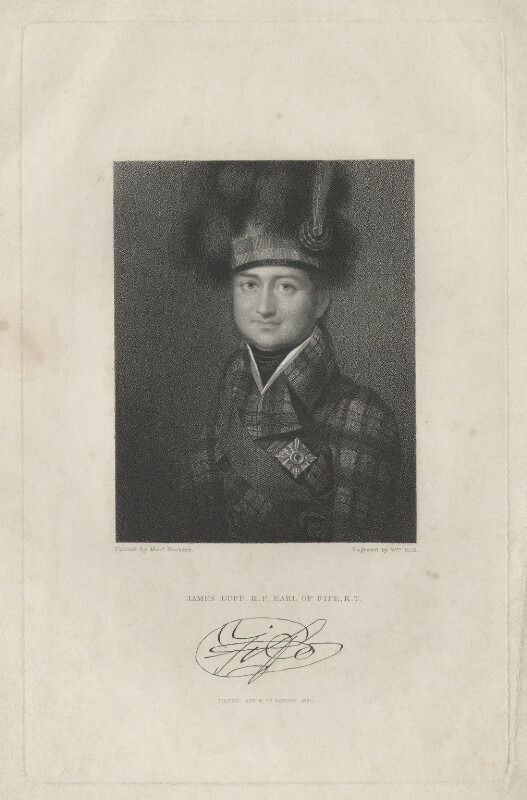Before 1849 there were no public holidays in Banff, but one day in the year was certainly different. The 6th of October was the Earl Fife’s birthday – I mean James, the fourth Earl. The festivities usually began by the arrival of the different coaches running to and from the burgh in Low Street, gaily decorated with flowers, like dahlias, hollyhocks and asters. The Aberdeen and Elgin coaches, in particular, vied with each other which would be most artistic. Imagine one with an iron-work foundation, rising into a crown on top, all a mass of colours. (As an aside, the poor passengers were rather bothered by earwigs). After discharging their passengers the coaches were driven down to Duff House for inspection by the Earl, who appeared on the balcony, and would tip the drivers and the guards. The loons of Banff went along too, for the schoolboys always got a holiday upon the 6th of October. No sooner had the coaches cleared off from before the house than the Earl called the boys to the front, and, telling them to look out, showered amongst them handfuls of silver, great and small. The old man, in his flowered blue silk dressing-gown reaching his feet, and in his velvet skull-cap, used to laugh heartily over the squirming mass of humanity rolling and clutching at the cash.
The next part of the day’s proceedings caused criticism as Scotland became more Victorian. At one o’clock in the afternoon large casks of porter were set up under the care of his lordship’s servants at different points in the burgh—notably the Battery Green, North Castle Street, the Gallowhill, the Greystone, the Back Path, Low Street, Low Shore, and the Green Banks or Old Market Place. You can imagine the clamouring, thirsty crowd hovering about with mugs, jugs, and vessels of all shapes and sizes, eagerly waiting their turn at the tap.
At one o’clock in the afternoon within the Hotel a goodly number of the professional men, farmers in the neighbourhood, and master tradesmen of the burgh assembled to eat an excellent dinner and drink long life to the noble Earl. There also his lordship’s kindly thought came in, for he invariably sent to the Hotel a quantity of game and an ample supply of port and sherry from his own cellar for the use of the company.
The day’s proceedings were wound up with a mighty bonfire on the top of the Hill of Doune, a ball in the County Hall, to which the Earl also sent an unstinted supply of wines, including champagne, not so common then as it was later, while another ball for the benefit of his servants and work-people was held at the barnyards, within the demesne.
This story comes, almost word for word, from Mr Hossack’s memories fifty years later, as he recounted it to the Banffshire Field Club in 1900.



